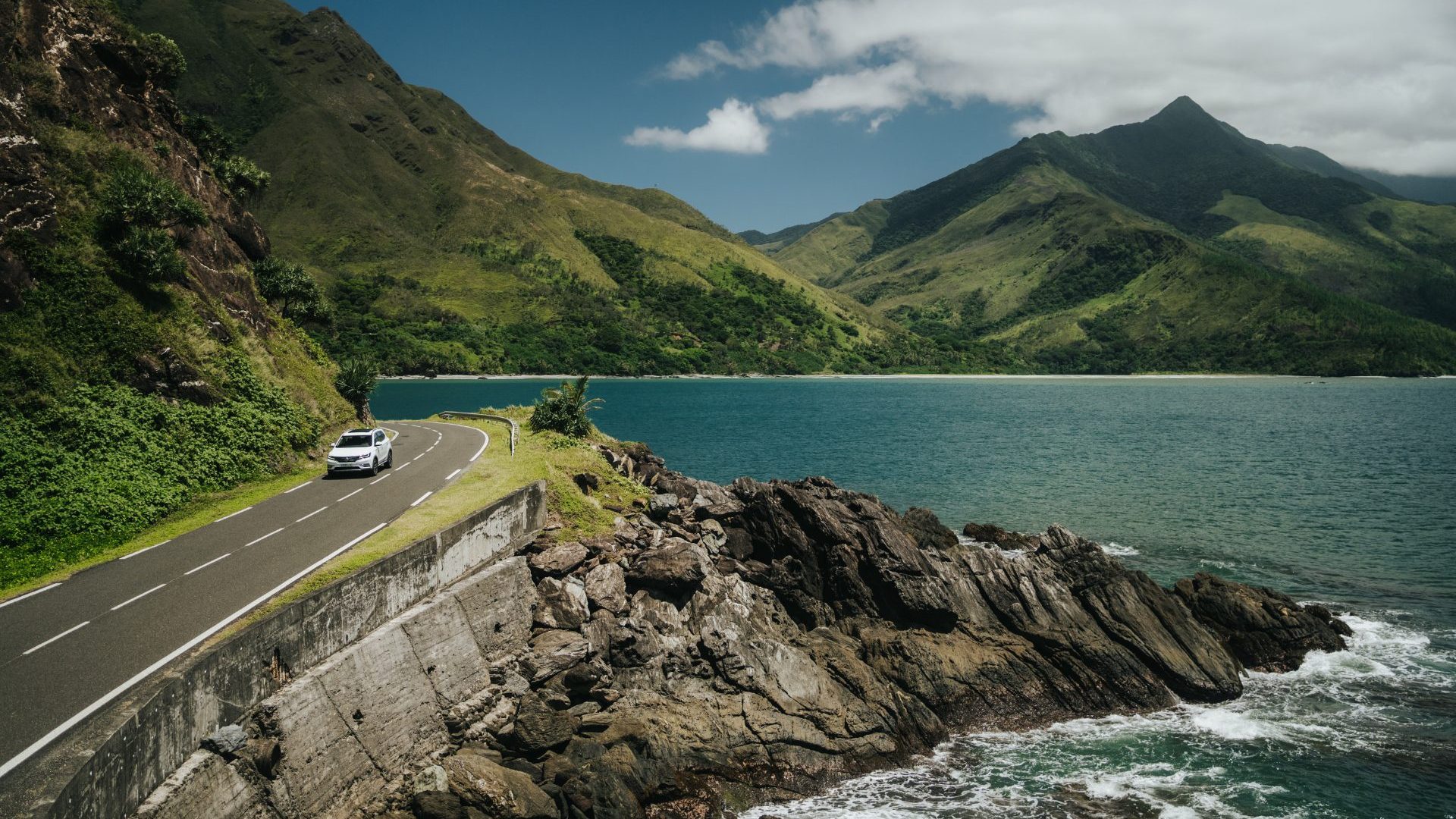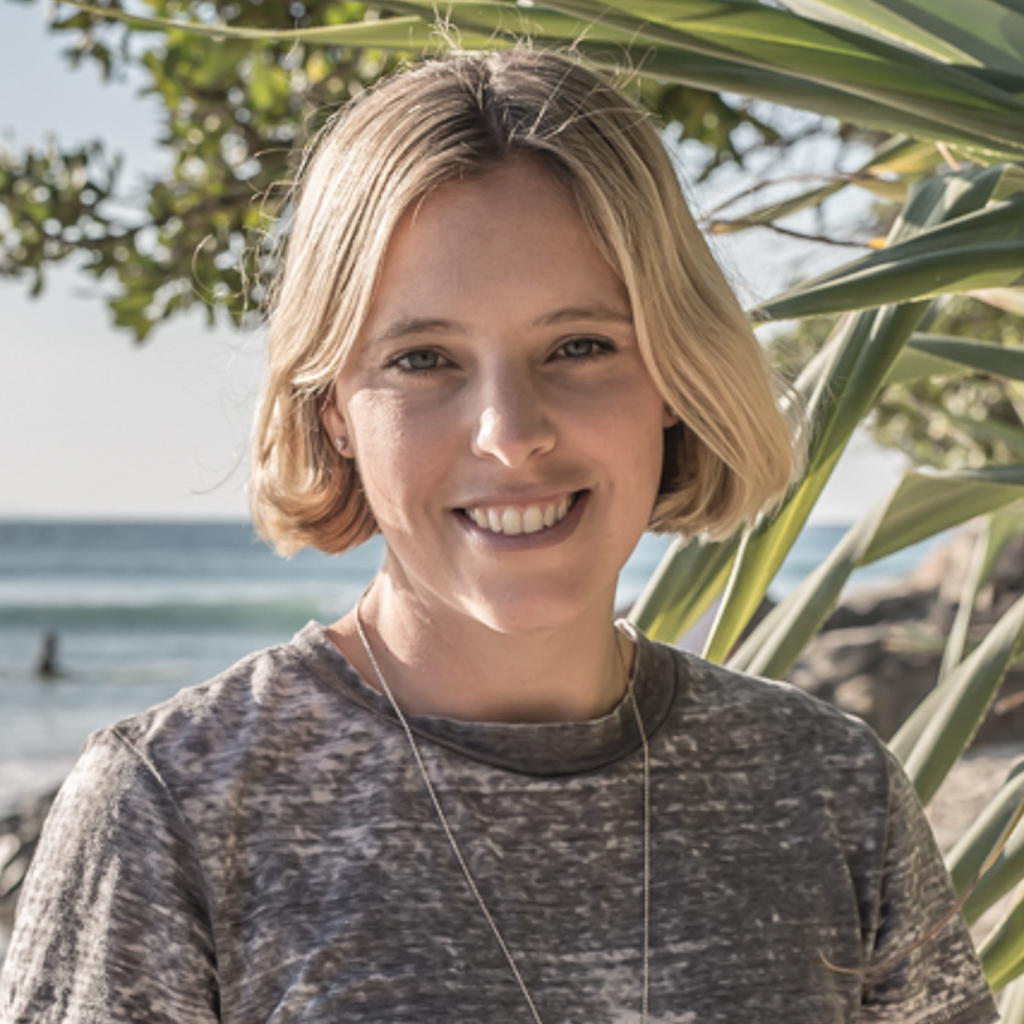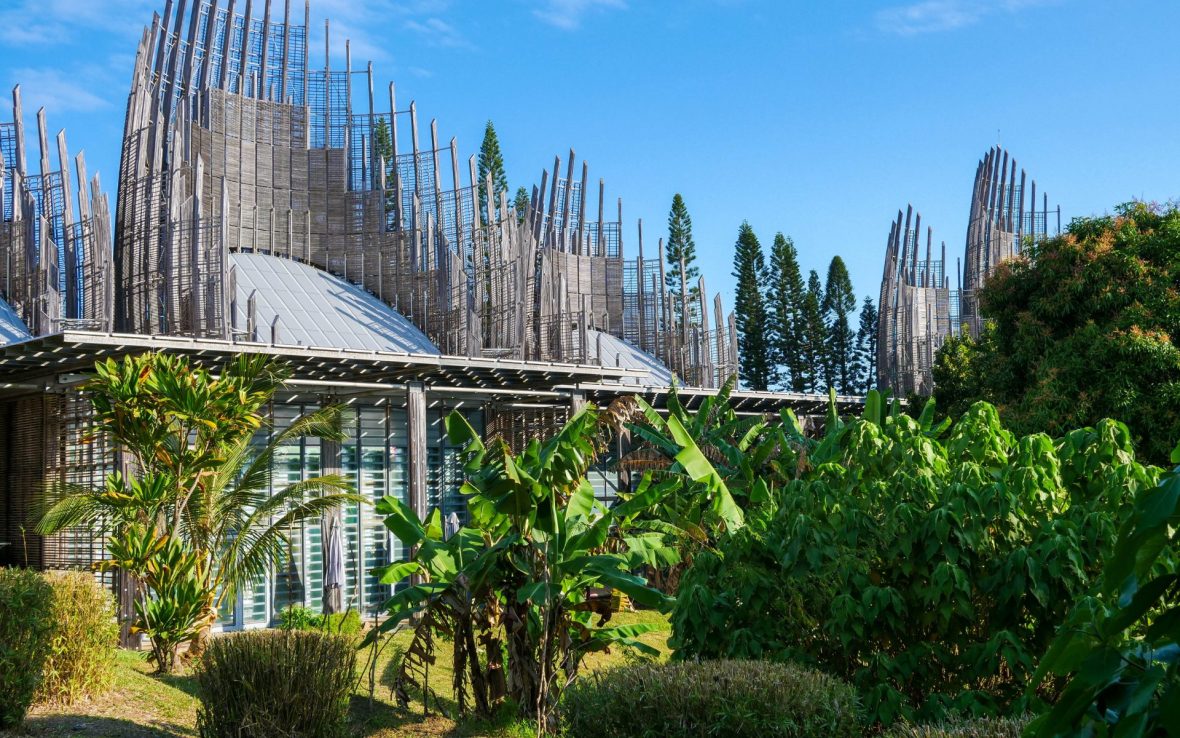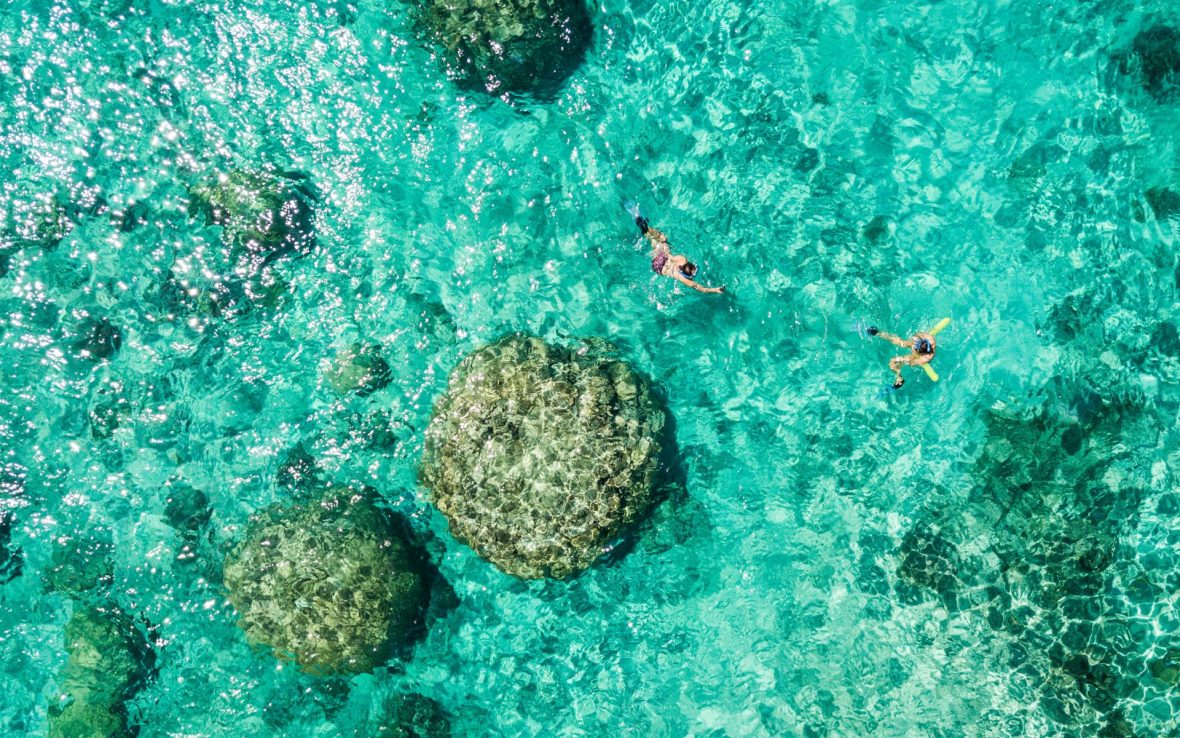
A year on from the riots that rocked New Caledonia, Sarah Reid visits a tropical idyll ripe for adventure—and longing for visitors.


A year on from the riots that rocked New Caledonia, Sarah Reid visits a tropical idyll ripe for adventure—and longing for visitors.
Entranced by a giant anemone dancing in the current, clownfish darting between its tentacles, it takes me a minute to see dive guide Pierre-Emmanuel Faivre pointing at a pair of Indo-Pacific leopard sharks right below us.
But the reef has even more wonders in store, from crimson electric clams ‘flashing’ like disco balls to tiny nudibranchs (sea slugs) adorned with color-popping patterns so dazzling it’s hard to believe they’re a defensive mechanism.
I’m diving in the Île des Pins (Isle of Pines) in New Caledonia, a semi-autonomous French territory just a two-hour flight from Brisbane, Australia. And Faivre—manager of Kunie Scuba, the island’s only dive center—and I have its world-class reefs to ourselves. It’s a rare treat for me—I’m averse to crowds—but it’s not ideal for the local tourism industry.
“Bookings are down by 80 per cent,” Faivre tells me. He attributes this partly to the suspension of national airline Aircalin’s Nouméa–Tokyo route during last year’s civil unrest, as Japan is a key market for Kunie Scuba (which has Japanese-speaking staff). And to date, the only direct flight between the two cities hasn’t resumed.
Last May, an attempt by France to enfranchize recent French arrivals to New Caledonia—home to 264,596 people—caused long-simmering tensions between pro-France groups and mostly Indigenous Kanak pro-independence groups to boil over. The resulting riots claimed 14 lives (mostly Kanaks), caused an estimated USD$2.3 billion worth of damage and grounded international flights, bringing tourism—New Caledonia’s second-biggest industry after its embattled nickel mining industry—to a standstill.
By early 2025, most flights and cruises had resumed and ‘do not travel’ warnings had been lifted. Then, in July 2025, an agreement signed by the French government and New Caledonia’s Congress to create a ‘state’ for New Caledonia (designed to give it more autonomy) paved the way for the territory to “get out of the spiral of violence,” according to Emmanuel Tjibaou, a Kanak lawmaker who took part in the talks.
With just one day to explore the 22,000-hectare park, we trace two short but beautiful loop trails through a tangle of evergreen rainforest in search of the emblematic white-crested cagou bird (we spot three), and to admire a towering, 1,000-year-old kauri tree.
Yet tourists have been slow to return to the paradisical archipelago, cocooned by a World Heritage-listed lagoon. Before the unrest, the Isle of Pines—a short flight or two-and-a-half-hour ferry ride from the capital Nouméa on Grand Terre, the main island—was one of New Caledonia’s most popular tourist destinations. Post-dive, I check into the Hotel Kou-Bugny which, despite its rockstar location on palm-fringed Kuto Bay, is basically empty. The bay’s blonde beach? All mine.
Back in Nouméa, the restaurant and resort lined bays of Anse-Vata and Baie des Citrons (Lemon Bay)—both recently fitted with shark nets—are buzzier. But even out of uniform, the young gendarmes (French military police) stand out among the tourists and locals. Aside from a few burned-out buildings I spot on a city tour, the presence of the beefed-up gendarme force is the only hint of last year’s riots. The streets are clean, locals are welcoming, and I feel safe strolling into town on my own.

Nouméa’s Centre Culturel Tjibaou (Tjibaou Cultural Center) celebrates the Indigenous Melanesians who make up 41.2 per cent of New Caledonia’s population. Looping the striking complex inspired by Kanak dwellings is the Kanak Path, which traces the story of the first man, Téâ Kanaké, and the plants he used for food, medicine and rituals at each stage of life’s journey.
My Kanak guide Georges Passil, from Lifou in New Caledonia’s Loyalty Islands, shares more insights on a guided tour. “It’s very important for us to respect the land and cultivate the land,” says Passil as we pass a small yam garden. This humble root vegetable has been central to Kanak diet and cultural practices for generations, he explains.
Later during my trip, I meet Kanak couple Marie and Amédée Fouye in the emerald-green hills of Bourail, 99 miles (160 kilometers) northwest of Nouméa, for a traditional Kanak feast called a bougna. I watch as Marie carefully wraps yams, taro, squash, onion, homemade coconut milk and local prawns in banana leaves and places the package on hot coals to steam . As the bougna cooks, the couple tells me, via a translator, that it’s an increasing challenge to engage Kanak youth in their rich traditions.
“TikTok,” says Marie with an eyeroll as she weaves a basket from a coconut-palm frond. It’s no surprise the escapism of social media appeals to Kanak youth. France’s motto, liberté, égalité, fraternité, ignores the economic and social inequalities in New Caledonia, annexed by France in 1853, where the poverty rate among Kanaks is 32.5 per cent compared to 9 per cent among non-Kanaks.
Marie and Amédée hope the younger generation will play a bigger role in New Caledonia’s emerging Indigenous tourism industry. Increasing global demand for Indigenous tourism, combined with positive examples in neighboring Australia, Aotearoa New Zealand and Fiji certainly suggests there’s a market for it.
New Caledonia is best known as a beach destination, but I find the lush, mountainous landscapes of Grand Terre brimming with adventures. “You can get out into nature so quickly in New Caledonia,” says Axelle Boullet, owner of one-woman ecotourism outfit Toutazimut, on the drive to Parc Provincial de la Rivière Bleue (Blue River Provincial Park), an hour south of Nouméa.
I was advised to avoid wearing light-colored clothing today, and I see why as the rust-red hills of the park come into view. “The metals in the soil make it toxic,” says Boullet. “It’s very hard to grow anything here.” The native vegetation that has adapted to survive in this environment is utterly otherworldly. “We think this plant developed scales so dinosaurs wouldn’t eat them,” says Boullet, as we pause to observe the rigid, overlapping leaves of the Dacrydium araucarioides, a type of conifer found only in New Caledonia.
While New Caledonia’s complex political struggles—born out of its even more complex decolonisation process—are far from over, its current period of calm offers an opportunity to spend our tourism dollars in a destination that needs them more than most.
With just one day to explore the 22,000-hectare park, we trace two short but beautiful loop trails through a tangle of evergreen rainforest in search of the emblematic white-crested cagou bird (we spot three), and to admire a towering, 1,000-year-old kauri tree. Fueling up with a homemade baguette, Boullet sends me off on a solo kayaking adventure along the river that gave the park its name, its water so clear, I can see the leaf litter on the riverbed several metres below.
There’s a distinctly post-apocalyptic vibe as the river empties into an eerie waterscape studded with tree skeletons—remnants of a forest drowned by the 1950s construction of the Yaté Dam. Paddling through this ghostly scene, I feel thrillingly (and slightly unnervingly) alone—until I spot Boullet waving from the bank.

New Caledonia’s barrier reef lies closer to the coast in Poé than in Nouméa, 109 miles (176 kilometers) southwest. The rolling hills of the Deva Domain, a protected natural playground rising up behind the coast, add to Poé’s appeal as a holiday destination—though I encounter as many wild deer as tourists in the sprawling grounds of the Sheraton New Caledonia Deva Spa & Golf Resort. The invasive, introduced species is also on the menu at the hotel’s beachfront restaurant. Doing my bit for biodiversity, I order the venison bourguignon.
I’m gutted when my low-impact, ultralight flight (ultralight aircraft are known for their excellent fuel efficiency) over Poé’s sublime stretch of the island’s lagoon is cancelled due to bad weather, but it takes more than gray skies and choppy seas to stop Ouest Corail’s snorkeling tours.
Following a short boat ride to the reef, I’m pleasantly surprised by the excellent visibility despite the less-than-optimal conditions, not to mention the diversity of fish—from a rainbow of parrot fish to several curious reef sharks—swarming the immense clam-encrusted coral structures I float over. With the world’s coral reefs facing unprecedented threats as a result of rising sea temperatures, overfishing and other stressors experiences like this are all the more special.
Like other passionate tourism professionals I meet during my trip, snorkel guide and lifelong local Philippe Reverce hopes tourists return soon enough to keep them afloat. “Many operators won’t survive this,” he says as we peel off our wetsuits. While New Caledonia’s complex political struggles—born out of its even more complex decolonisation process—are far from over, its current period of calm offers an opportunity to spend our tourism dollars in a destination that needs them more than most.
The writer visited New Caledonia as a guest of New Caledonia Tourism and Aircalin.
****
Adventure.com strives to be a low-emissions travel publication. We are powered by, but editorially independent of, Intrepid Travel, the world’s largest travel B Corp, who help ensure Adventure.com maintains high standards of sustainability in our work and activities. You can visit our sustainability page or read our Contributor Impact Guidelines for more information.






Can't find what you're looking for? Try using these tags: